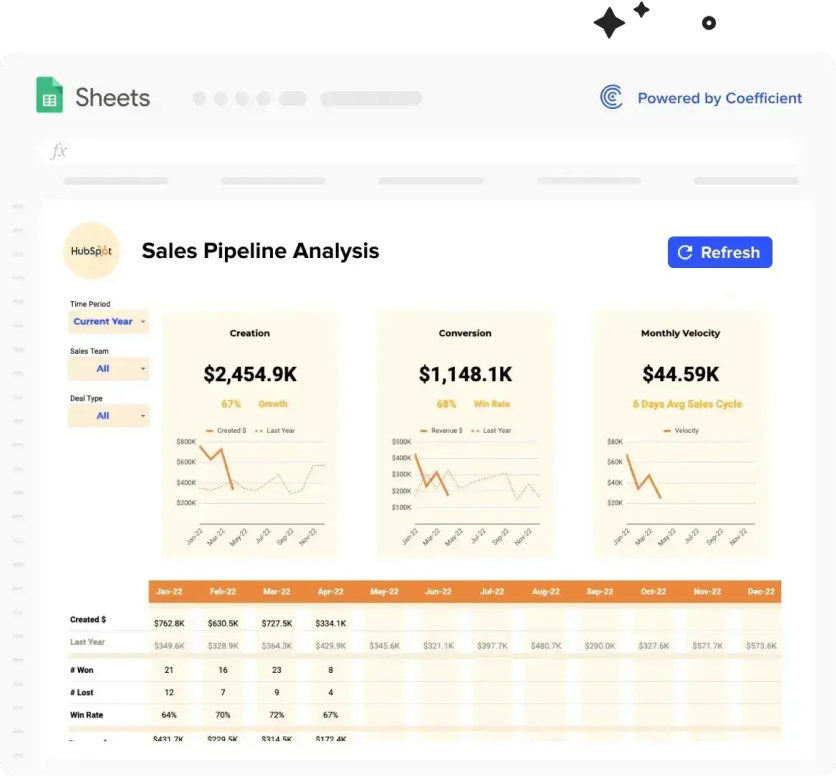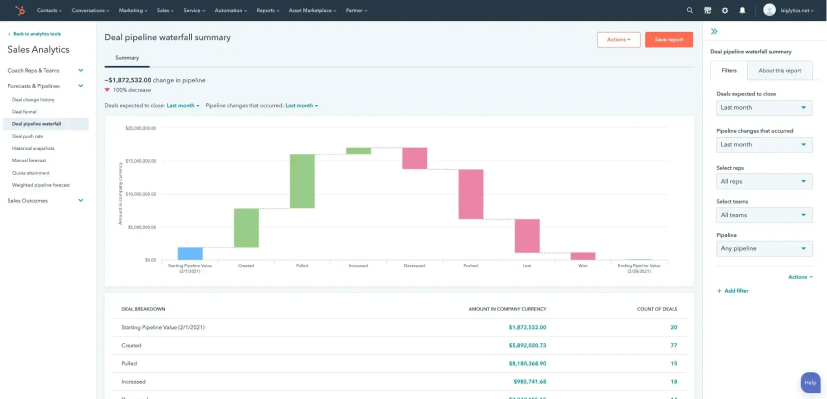
The 2024 State of Marketing & Trends Report: Data from 1400+ Global Marketers
The 2024 State of Marketing & Trends Report: Data from 1400+ Global Marketers
Written by abhishekchawla26

Free Sales Plan Template
Outline your company's sales strategy in one simple, coherent sales plan.
Download Your Free Sales TemplateUpdated: 12/31/24 Published: 12/28/24
Why Tracking Sales Activity Matters
As the adage goes, “What gets measured gets improved.” Whether I’m aiming to hone my sales skills or I’m managing a team of individual contributors, tracking sales and the activities that lead to them is essential to keeping and closing a healthy pipeline.
In my experience, without the proper tracking processes and tools in place, the sales department can feel like a black box where indeterminate inputs yield obscure outputs — a recipe for burnout in any organization.
To create a culture where your sales talent actually wants to stick around, you need to implement unobtrusive tracking solutions where success and the process that produced it are both identifiable and repeatable.
In my role as the Head of Business Development for a rapidly growing SaaS company, no tool has been more important than the sales activity tracker. With our tracker, I manage sales contacts and quotas and monitor individual deals as they flow through the sales pipeline.
When I began my role several years ago, the sales department was a mess, with reps struggling to track their own activities, let alone achieve any real quotas. One of my first steps was to implement HubSpot’s Sales Hub along with an equally robust training program to help everyone understand the capabilities of our new tool.
The complexity of your own sales activity tracker will necessarily vary with the size and budget of your organization, ranging from a simple spreadsheet to a dedicated piece of your tech stack that automatically operates in the background. Either way, the main components of sales tracking are the same. Here are the sales tracking elements I’ve found most important.

Free Sales Plan Template
Outline your company's sales strategy in one simple, coherent sales plan.
Get Your Free TemplateThe Three Elements of Sales Tracking
1. Organizational Sales Goals
From a top-down view, the sales activity tracker should be designed to achieve measurable organizational sales goals. If the goal for Q3 is a 10% increase of $3M in quarterly revenue, the sales team needs to produce an additional $300K in sales. By establishing an average deal size, sales leaders can determine how many deals need to close to achieve the organizational goal.
The C-suite will always want more sales, which is why I’ve found it’s vital to have a sales activity tracker that can show company brass how to actually attain goals.
When you’re being pushed to achieve more in the sales department, whether it’s 10% or 50%, the sales activity tracker will help decision-makers understand what additional inputs are required to hit those numbers, whether it means increasing your SDR headcount, automating your quoting workflows, or investing in new tools to scale outbound.
2. Individual Quotas
Once a sales team has a target in sight, determining individual quotas is as easy as dividing the total desired revenue by the number of reps on the team, taking into account some territory differences and the general rule that roughly 70-80% of your reps should be able to meet their quotas — otherwise, your established quotas might not be realistic.
Tracking quotas is vital for calculating the compensation of your sales reps, but I’ve found it comes with a benefit that’s often overlooked. When a few contributors on your team are consistently exceeding their quotas, the rest of the department is going to take notice.
If you’ve hired the right people, average reps will realize they need to imitate the behavior of your top performers. In an organization where communication and collaboration are valued, a rising ride really can raise all ships.
3. Performance Benchmarks

Once you know how much revenue each individual contributor should be generating, you can break down the activities that have historically been required to produce that revenue.
Whether your sales team is made up of full-cycle reps or SDRs filling an AE’s calendar with qualified leads, work backward from the sales target to determine the necessary inputs and outline those benchmarks in your sales activity tracker.
If it takes 20 outbound calls to schedule a qualified demo and your AEs convert 20% of demos on average, your SDRs need to make 100 calls to generate a closed deal.
The value of that deal and the size of your sales team will inform how many dials need to be made per month, and the activity tracker will summarize the inputs from your individual contributors, the progression of deals through the stages of your pipeline, and the net new business that emerges as a result of both the individual and collective sales efforts over time.
Sales, like all professions, has both high performers and laggards, with most reps falling somewhere close to average. In my experience, nothing improves the performance and longevity of those in the middle of the bell curve quite like piercing the veil of “luck” and breaking highly desirable results down into actionable inputs.
That breakdown is ultimately the reason a sales activity tracker is so important in any organization that’s currently flying blind. By tracking activities and the closed deals they produce, leaders can hone in on a formula for lasting sales success.
How to Keep Track of Sales
More generally, a tracking tool, spreadsheet, or template makes it easy to have all the information you need to review in one place. You can then use these resources to quickly identify trends and any corrections needed in one-on-ones and team meetings to review performance.
To top it off, seeing where you need improvements means you can put a plan in place that optimizes sales performance and team time.
On a more granular level, you and your team can use trackers to keep tabs on key activities that drive sales performance, including the following.
Prospecting
Here’s the deal: prospecting can be a time-consuming and sometimes frustrating activity. Without it, though? Your sales pipeline is liable to dry up — and fast. So finding prospects is necessary, but that doesn’t mean you can’t be more efficient with this task.
Of course, a sales tracker can be used to log the basics, such as company/decision maker names, contact numbers, pain points, outreach activities, etc.
But beyond that, log where and how you and your sales team find potential customers. Then, note down how many hours this activity takes each day. Once you’ve gathered enough data, spotting ways you and your team can optimize prospecting will be easier.

